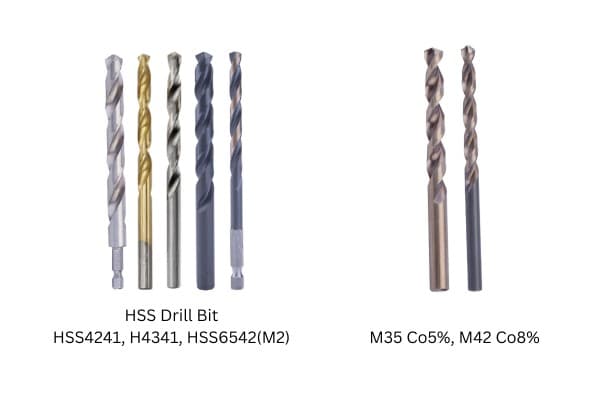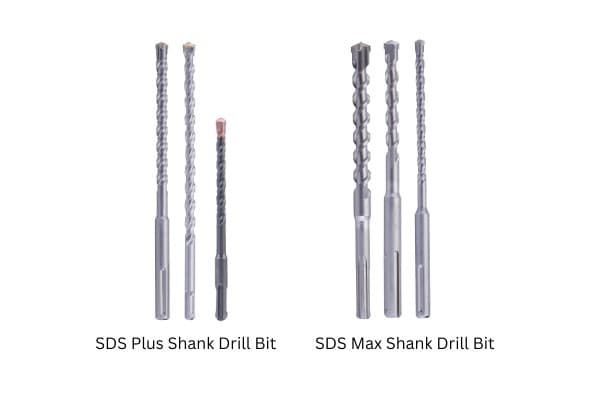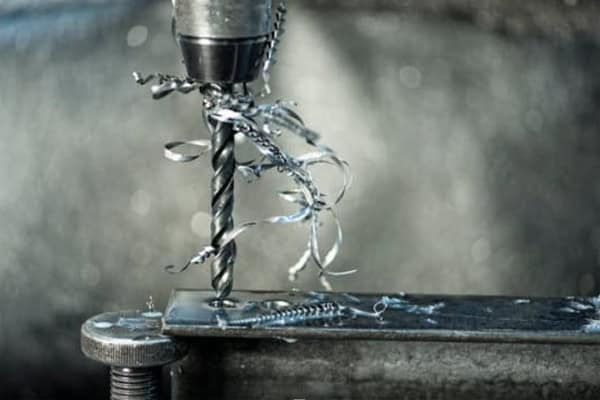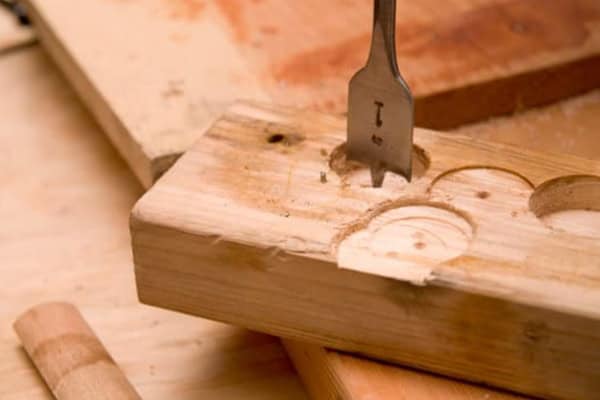
When you’re about to drill, knowing what your drill bits are made of is crucial. It affects not just the drilling outcome but also the tool’s durability and performance.
Drill bits come in various materials, from High-Speed Steel (HSS) to cobalt. Each material has its unique advantages and suitable applications. Choosing the right drill bit can boost your efficiency and extend the life of your tools.
Let’s dive into the different materials used in drill bits and their applications.
Support Guide to Drills: HSS, SDS, and Cobalt Explained
Drill bits come in different materials, with HSS, SDS, and cobalt being the most common. Selecting the right material can significantly enhance drilling performance and tool longevity.
HSS (High-Speed Steel) drill bits are versatile and can handle a variety of materials with good heat resistance and toughness. SDS bits are designed for heavy-duty work, commonly used in concrete and masonry. Cobalt drill bits excel in drilling hard materials, offering superior wear resistance and strength.

Let’s explore the characteristics and applications of each drill bit material in detail.
HSS Drill Bits: Pros and Cons
HSS drill bits are popular for their excellent all-around performance, suitable for drilling wood, metal, and more.
| Pros | Cons |
|---|---|
| Good heat resistance | Not durable enough for ultra-hard materials |
| Cost-effective | Wears out with prolonged use |
| Polyvalent | Requires regular maintenance |
HSS drill bits are a go-to choice for both beginners and professionals due to their affordability1 and reliability. However, when working with extremely hard materials, you might need a more specialized bit.
Best Practices for Using HSS Drill Bits
To maximize the lifespan of your HSS drill bits, maintain appropriate speed and cooling. Regularly inspect and replace worn bits to ensure precise and efficient drilling.
- Speed Control: Adjust your drill’s speed based on the material. Higher speeds are suitable for softer materials like wood, while lower speeds are better for metals.
- Cooling Techniques: Use cutting fluids or lubricants when drilling metal to reduce heat buildup, which can wear out the drill bit faster.
- Maintenance Routine: Clean your drill bits after use to remove debris and prevent rust. Store them in a dry place to maintain their sharpness and integrity.
By following these practices, you can ensure that your HSS drill bits perform optimally and last longer, providing you with reliable drilling performance every time.
Difference Between HSS and Cobalt Drill Bits
Choosing between HSS and cobalt drill bits depends on the material you’re working with and your specific needs.
HSS drill bits are great for general purposes, while cobalt drill bits are specifically designed for high-strength materials like stainless steel and hard alloys. The added cobalt element enhances their heat resistance and hardness, making them ideal for more demanding drilling tasks.

Understand how HSS and cobalt drill bits perform differently across various applications.
Advantages of Cobalt Drill Bits
Cobalt drill bits maintain their sharpness even under high temperatures and pressures, perfect for precision and durability in challenging drilling tasks.
| Avantages | Applications |
|---|---|
| High heat resistance | Stainless steel, titanium alloys |
| Increased hardness | High-strength alloy materials |
| Long lifespan | Frequent and intensive use |
Although cobalt drill bits are pricier, their exceptional performance and longevity make them a favorite among professionals, especially for tasks that require frequent use and high precision.
How to Choose the Right Drill Bit Material
Assess your work requirements and the types of materials you’ll be drilling. For general use, HSS drill bits2 suffice, but for high-strength materials, cobalt drill bits are the better choice.
- Material Compatibility: Match the drill bit material to the material you’re drilling. Use HSS for softer metals and wood, and switch to cobalt for harder metals.
- Frequency of Use: If you drill frequently into hard materials, investing in cobalt drill bits can save you time and money in the long run.
- Budget Considerations: While cobalt bits are more expensive, their durability often justifies the cost for professional use. For occasional drilling, HSS bits may be more economical.
By carefully considering these factors, you can select the drill bit material that best meets your needs, ensuring efficient and effective drilling for your projects.
How Do I Know What Kind of Drill Bit I Need?
Selecting the right drill bit can enhance your efficiency and ensure quality drilling results. Understanding different materials and designs helps you make informed choices.
Choose drill bits based on the material type, drilling depth, and workload. Different materials like wood, metal, and concrete require specific drill bits to achieve the best drilling performance and tool longevity.

Let’s delve into the key factors to consider when selecting a drill bit to help you make the best decision.
Material Type and Drill Bit Selection
Different materials require different types of drill bits. For example, wood is best drilled with wood drill bits, metals with HSS or cobalt bits, and concrete with SDS bits.
| Material Type | Recommended Drill Bit Type |
|---|---|
| Bois | Forets à bois |
| Métal | HSS or cobalt drill bits |
| Béton | Concrete drill bits |
| Maçonnerie | SDS tungsten carbide bits |
Choosing the right drill bit type based on the material ensures smooth drilling and prolongs the life of your tools.
Considering Drilling Depth and Workload
Beyond material type, drilling depth3 and workload are crucial factors. For deep holes, opt for longer drill bits; for heavy-duty tasks, choose more durable materials.
- Drilling Depth: For deeper holes, use extended-length drill bits to reach further without breaking. Ensure your drill has enough power to handle the extra length.
- Workload Intensity: High workload tasks, such as continuous drilling in tough materials, require drill bits that can withstand the stress without losing their sharpness or breaking.
- Tool Compatibility: Ensure the drill bit is compatible with your drill’s chuck size and type to maintain stability and reduce the risk of accidents.
By taking these additional factors into account, you can select drill bits that not only match the material but also the specific demands of your project, leading to better results and a smoother workflow.
Can I Use a Metal Drill Bit on Wood?
Technically, you can use a metal drill bit on wood, but it’s not the best choice and may lead to subpar results.
Metal drill bits are designed for hard materials, and using them on wood can cause the wood to split or result in imprecise holes. It’s better to use drill bits specifically designed for wood to achieve better drilling performance and tool longevity.

Explore the potential issues and solutions when using inappropriate drill bits on different materials.
Compatibility Issues Between Wood and Metal Drill Bits
Using metal drill bits on wood4 can lead to unstable drilling paths, increased risk of splitting, and tool wear, affecting the overall quality of your work.
| Issues | Solutions |
|---|---|
| Imprecise drilling | Use wood-specific drill bits |
| Wood splitting | Control drilling speed and use appropriate bit material |
| Increased tool wear | Select the right drill bit type for the material |
To ensure quality drilling and extend tool life, always choose drill bits that match the specific material you’re working with.
How to Optimize Drilling Performance
Select the correct drill bit, control your drilling speed, and apply appropriate pressure to ensure the best drilling results and tool longevity. These practices help achieve optimal performance across different materials.
- Proper Drill Bit Selection: Always use drill bits designed for the material you are working with. For wood, brad-point bits are ideal as they provide precise control and reduce the risk of splitting.
- Speed and Pressure Control: Adjust the drill speed to match the material’s hardness. For wood, higher speeds can lead to splintering, so a moderate speed is preferable. Apply steady, even pressure to avoid snapping the bit or damaging the material.
- Secure Workpiece: Ensure the wood is firmly clamped or supported to prevent movement during drilling, which can lead to inaccuracies and material damage.
- Use of Pilot Holes: Drilling a smaller pilot hole first can guide the larger drill bit, ensuring accuracy and reducing the risk of the wood splitting.
By implementing these strategies, you can enhance your drilling accuracy and maintain the integrity of both your tools and materials, leading to professional-quality results every time.
Conclusion
Choosing the right drill bit material can greatly enhance your efficiency and extend the life of your tools. Understanding the features of HSS, SDS, and cobalt drill bits helps you make informed decisions for various applications.
-
Offer insights into the cost-effectiveness of HSS drill bits, assisting users in budget-conscious decision-making. ↩
-
High-speed steel drill bits, including their benefits and ideal applications, help users make informed decisions for general drilling tasks. ↩
-
Provide users with detailed information on how to determine the appropriate depth for various materials, ensuring precise and effective drilling. ↩
-
Offer users comprehensive guidelines on woodworking techniques, enhancing their understanding of material-specific challenges and solutions. ↩